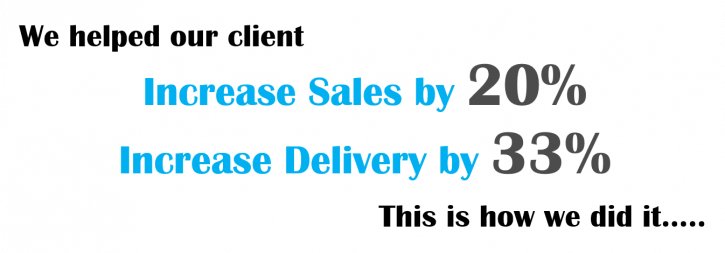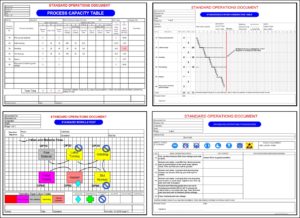
**No images or Business Name as Customer NDA in place**
Opportunity
This Private Equity owned business was under performing against budget. Particular attention was required within the operational areas with Productivity and On Time Delivery drifting.
The Managing Director required a system to: communicate the strategy, allocate resources, focus and align actions, and control business drift. He wanted to ensure that all key improvement activities had ownership, responsibility, accountability and the relevant training and practitioner support required to increase overall company performance.
Improvement
Working with the Managing Director & Executive Team the decision of implementing Strategy Deployment and A3 Problem Solving was agreed along with hands-on project execution support.
Training was given to all Management and Leaders in what Policy Deployment and A3 Problem Solving is, what benefits and how the process should be structured to enable execution of the business objectives. Key fundamentals were as follows:
- Identify the few, long term breakthrough objectives that are critical to long term success of the company.
- Link these objectives with specific action plans throughout the organisation.
- Focus and align the company’s internal organisations to achieve these long-term objectives.
- Turn the strategic plan into a year – over – year action plan.
- Coaches and Mentors others
Workshops were held to ascertain the critical improvement activities to be focused on within the business. Training and Coaching was given to the owners of each A3 Plan on how to manage and communicate through the A3 process. Guidance and training to understand background, current state, problem definition, analysis, actions and follow up.
Management Control Rooms were introduced with regular performance reviews held with all owners and stakeholders present. Ongoing coaching and mentoring in Management Behaviour for the process along with business improvement training and our Lean Coaching Programme to ensure execution and sustainability. Operational Excellence and Process Optimisation workshops/projects were completed covering Sales, Purchasing & Logistics, Operations and Planning.
The company significantly impacted it’s financial position over a 9 month period,
- Increasing Sales by 20%
- Delivery by 33%
- Efficiency by 28%.










